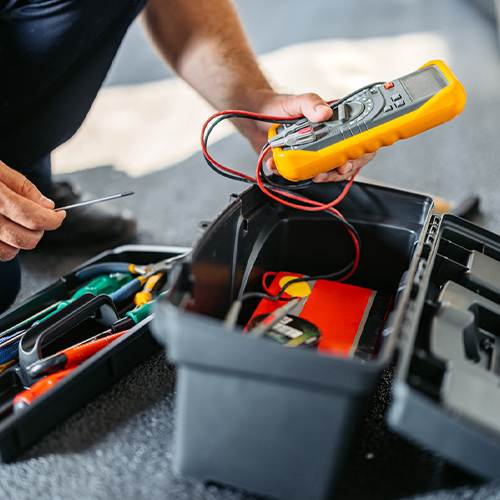Why Homeowners Call Rhema
Common Questions About Electrical Inspections
Local building codes often require residential electrical inspections during significant electrical work, such as new construction, major renovations, or when upgrading your electrical panel. They are also commonly needed when buying or selling a home to ensure the system is safe and up to code. Insurance companies may also require an inspection after a claim or before issuing a new policy to verify the safety of your home’s electrical system.
Even if not mandated, we recommend having your electrical system inspected every 10 years, or more frequently for older homes or if you notice issues like flickering lights or tripped breakers.
The most common issues found during a house electrical inspection involve outdated components, unsafe wiring practices, or missing protections. Our electricians especially look out for concerns that can lead to shock, fire hazards, or system failure.
Typical findings during an electrical safety inspection include:
- Damaged or frayed wires
- Loose or double-tapped breakers
- Overloaded circuits
- Missing or faulty GFCI/AFCI protection
- Improper grounding or bonding
- Corroded panels or connectors
- Uncovered or inaccessible junction boxes
These issues may reveal damage from age, pests, moisture, or improper installations over the years. They are more common in older homes or properties that haven’t been inspected recently. Catching them early helps you plan repairs, avoid hazards, and stay compliant with current safety codes.
Most electrical inspections for single-family homes take between one and three hours. The time depends on the size of the property and how easy it is to access key areas. Your electrician will need to check the electrical panel, test various outlets and switches, and examine attic or crawlspace wiring. Some circuits may be shut off temporarily during testing.
After the inspection, your electrical contractor will provide a report that outlines any issues and recommended next steps. Though you may be hesitant to take the time out of your day, a timely electrical home inspection can help you avoid more extensive and costly repairs down the road.
During a home electrical safety inspection, the electrician begins with a visual assessment of accessible wiring, outlets, and the electrical panel. They look for signs of deterioration, improper routing, outdated materials, or unsafe modifications. Any exposed wires, corroded connectors, or overloaded circuits will be flagged for repair.
They also perform functional tests using professional tools to check that circuits are secure, compatible with modern appliances, and don’t exceed capacity. A thorough electrical inspection service will confirm that your wiring meets the requirements of both local building codes and the National Electrical Code.
Our electricians use meters and diagnostic equipment to measure voltage, resistance, and amperage during an inspection. These tools help detect circuit faults, undersized wires, or signs of overheating. We may also perform load testing to confirm that each breaker can safely handle the devices it supports.
We also test safety features like GFCIs and AFCIs to check for a proper response under fault conditions. Finally, we’ll verify that circuits are grounded and labeled correctly. This level of circuit evaluation is standard in any electrical panel inspection and helps guarantee the safe operation of lights, appliances, and outlets throughout your home.

